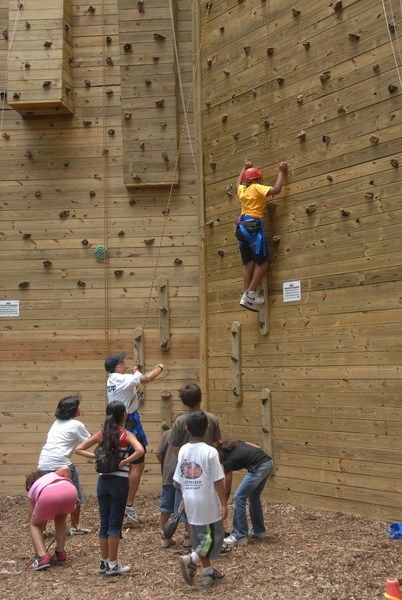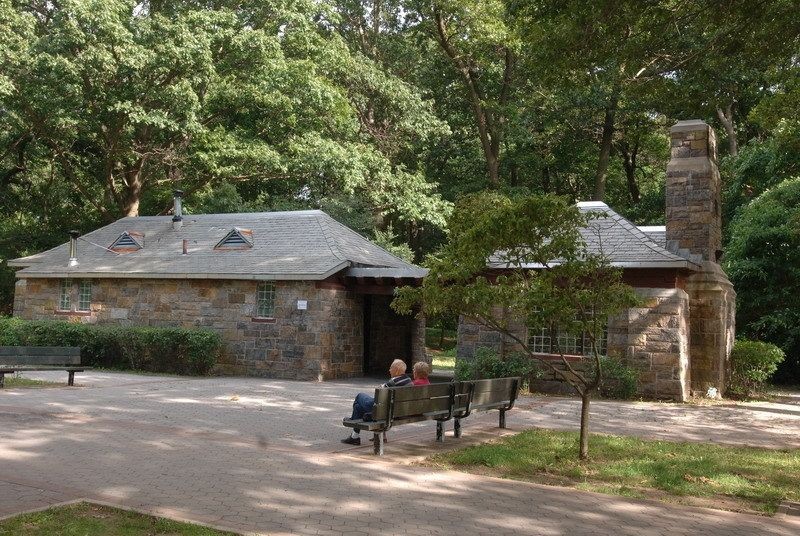
Alley-Pond-Park2

Alley-Pond-Park

Alley-Pond-Park3
Place Category: Parks and Playgrounds
This park is the second largest in Queens. The site is named for The Alley, an 18th century commercial and manufacturing center formerly located here. The origin of that center’s name is the subject of some debate. One theory is that “alley” refers to the shape of the glacier-made valley. Another holds that colonial travelers, who passed through the valley to Brooklyn, en route to the Manhattan ferries, named it “the alley.” The well-traveled passage is believed to have been the route George Washington (1732-1799) took while touring Long Island in 1790.
The park lies on a glacier-formed moraine, a ridge of sand and rock that formed 15,000 years ago, marking the southern terminus of the Minnesota Ice Sheet. The glacier dropped the boulders that sit on the hillsides of the southern end of the park and left buried chunks of ice that melted and formed the ponds dispersed throughout the valley. Geologists call these “Kettle Ponds.” Fresh water drains into the valley from the hills and bubbles up from natural springs, mixing with the salt water from Little Neck Bay. As a result, the park is host to freshwater and saltwater wetlands, tidal flats, meadows, and forests, creating a diverse ecosystem and supporting abundant bird life.
The native Mattinecock once inhabited the area around Alley Pond Park, attracted by the shellfish in Little Neck Bay. In 1673, King Charles I of England gave a 600-acre land grant to Thomas Foster, who built a stone cottage close to modern-day Northern Boulevard. Two other Englishmen, Thomas Hicks and James Hedges, built mills that harnessed water flowing into Alley Creek. Although the area supported light industry, it stayed essentially rural throughout the 19th century and attracted residents with its natural beauty. William Vanderbilt’s (1849–1920) privately run Long Island Motor Parkway was built through the area in 1908, a harbinger of the age of automobile travel that would continue to shape the park through the 20th century.
As the borough of Queens expanded rapidly, its population doubling in the 1920s, the City moved to protect open spaces. The City of New York acquired this site for park purposes on June 24, 1929, pursuant to resolution adopted by the Board of Estimate (a now defunct municipal body) on July 28, 1927. Parks acquired 330 acres of land surrounding the alley later that year, the most significant acquisition in the creation of the park, and cleared several older structures from the property. “This is an attractive offer and parks must be anticipated for the good of the increasing populations,” Mayor James J. Walker (1881–1946) said after the Board of Estimate approved the $1.3 million acquisition. “There is no better site in Queens.” At the same time, the City obtained an option on 500 acres for a parkway connecting other parks in Queens, one of the first steps in a move to connect the City’s parks via “greenways.”
The park, including 26 acres of newly constructed playing fields and the Alley Pond Park Nature Trail, the first such trail in the city’s park system, officially opened in 1935 at a ceremony attended by Mayor Fiorello H. LaGuardia (1882–1947) and Parks Commissioner Robert Moses (1888–1981). The new park offered users a 23-acre bird sanctuary, bridle paths, tennis courts, picnic areas, and a 200-space parking lot. Title to the Vanderbilt roadway was transferred to Parks in 1937 and the next year it was converted into a 2.5-mile bicycle path.
In its zeal to convert the area for recreational uses and through the construction of the Long Island Expressway and Cross Island Parkway in the 1930s, Parks filled in much of the marshland. This land now is now recognized as a vital link in nature’s ecosystem. In 1974, Parks created the Wetlands Reclamation Project and began rehabilitating the natural wetlands of the park. The Alley Pond Environmental Center opened in 1976 to provide the public with an understanding of the park’s history and ecology.
Alley Pond Park offers glimpses into New York’s geologic past, its colonial history, and its current conservation efforts. Over $10.9 million was spent from 1985 to 1999 to acquire more land for the park, ensuring that historic Alley Pond remains a place of respite and recreation for many years to come. In 1993, almost $1 million was spent to restore the Picnic Grove, renovate two stone buildings, and reconstruct the playground and soccer field, guaranteeing that future generations will continue to be able to enjoy the park.
- Alley Pond Park
Queens
New York
11364
United States No Records Found
Sorry, no records were found. Please adjust your search criteria and try again.
Google Map Not Loaded
Sorry, unable to load Google Maps API.
-



